
views
Teaching Your Frog to Jump
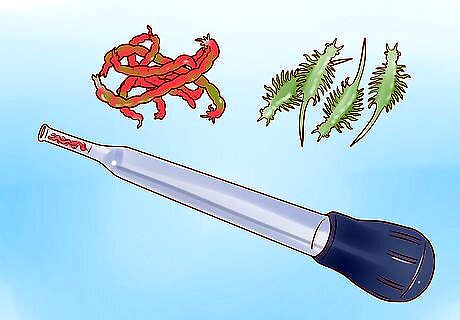
Place some food at the tip of a turkey baster. Use your frog's regular food, such as bloodworm or brine shrimp, and place a little bit at the end of a turkey baster. Suck the food slightly into the baster to keep it securely attached to the tip underwater. You can use treats instead of regular food if you so wish, but be careful not to use too much or your frog may not want to eat its regular food later on. A nice treat includes beef heart or krill.
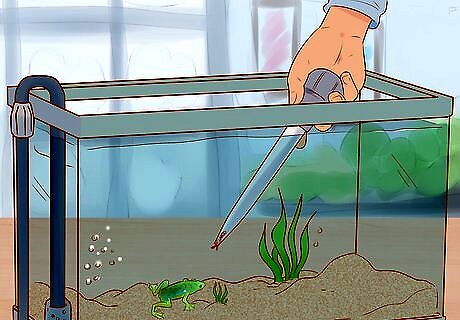
Position the tip of the baster about 1–2 in (2.5–5.1 cm) above the frog's head. Remove the tank cover, but do not take your frog out of the aquarium, as it needs to be fully submerged in water. Position the tip of the baster in the water just above the frog's head and wait for it to get interested. You can gently sway the baster back and forth in the water to spread the scent of the food more effectively.
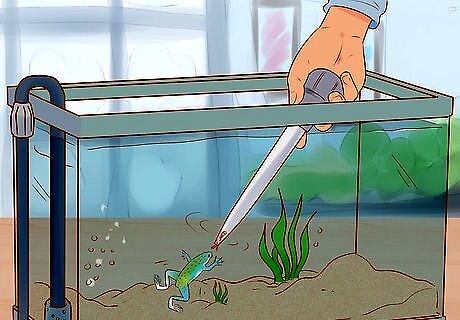
Wait for your frog to notice the food, and watch it jump up and eat it. Your frog should realize there is food above it soon enough, but if it doesn't then keep trying and be patient. As long as it can't reach the food just by stretching, it should jump up in the water and try to get the snack from the tip of the baster. If your frog still doesn't want to jump up even after it realizes there is food above it, it might be too high up. Lower the tip of the baster slightly until your frog is able to reach it!
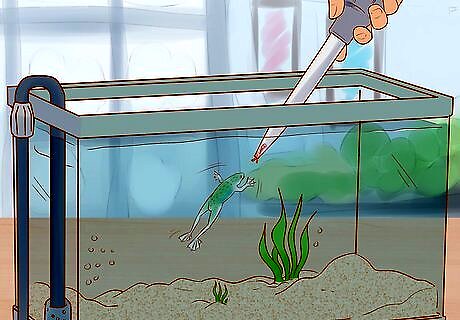
Repeat every day, raising the baster slightly higher each time. You can train your frog to jump higher and higher each day by raising the tip of the baster a little bit higher than you had it the previous day. Keep offering your frog food, as it won't be interested in jumping for no treats! Keep the baster in the water, no matter how high it wants to jump after several days, or it could jump out on accident while trying to reach the food outside of the water — frogs are strong jumpers!
Training Your Frog to Follow Your Finger
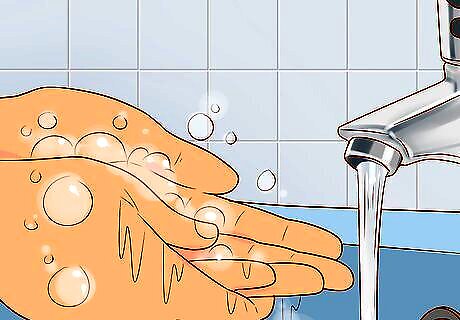
Wash your hands with unscented soap and thoroughly rinse with water. Frogs are delicate creatures and their skin is extremely absorbent compared to many other animals. Wash your hands and make sure to rinse them with water for at least a minute to get rid of any soapy remnants. Do not handle a frog with your bare hands even if you washed them, as the oils from your skin as well as all forms of soap can cause damage to the frog.
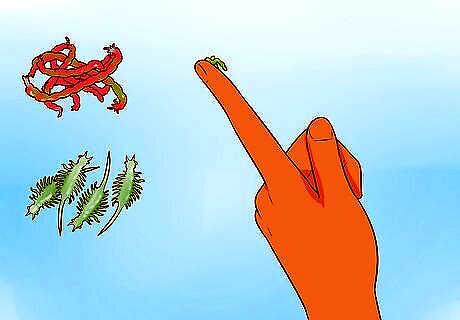
Put some of your frog's food on your index finger. Use enough food so that the frog will be able to see it on your finger from inside the aquarium. You can balance bloodworm or shrimp on your finger, or use fish pellets. Don't dip your finger in the water, or the food may fall off and you won't have anything to entice your frog with.

Trace your finger outside of their enclosure in random, slow patterns. Don't touch the tank and smear the food, instead trace a random pattern slowly in the air just outside the tank. African dwarf frogs have notoriously bad eyesight, so keep your finger close to the glass. Live food may be more effective than dead food, in which case you should use tweezers to hold a fly or other live bug in place while you trace it in the air.
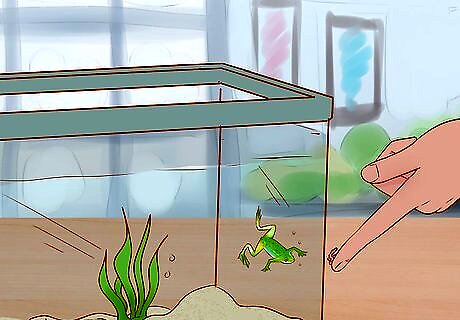
Watch the frog follow your finger, and after a few minutes, let it have the food. After a few minutes of playing with your frog, drop the live food into the enclosure and let it have the treat. After a handful of times doing this, you may find that your frog follows your finger instinctively! Give your frog treats every time it follows your finger. Over time, it will associate your movements with treats, and will keep playing with you!
Letting Your Frog Chase a String

Tie a thin string tightly around a piece of food, such as bloodworm. Securely fasten a piece of bloodworm to the end of a long string. Use fishing wire, a colored fabric string, or something else firm and thin that will effectively wrap around a small piece of food. You may find that a frozen bloodworm is the best option to tie to a string. You can use live food, but it will be harder to fasten around the string. Do not use a fishing hook with live food on the end of it. When the frog goes to eat the food, it will hook itself — fishing hooks are for catching fish, not playing with your pets.
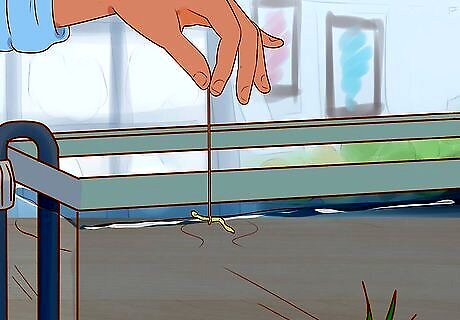
Dangle the string in the water of your frog's aquarium and wait till they notice it. Dangle the string about halfway into the aquarium and let it float near your frog. It should notice the food in a few seconds and start to go for it. Using fishing wire or a strong thin string is recommended as it won't deteriorate in the water and can be used multiple times in a single play session.
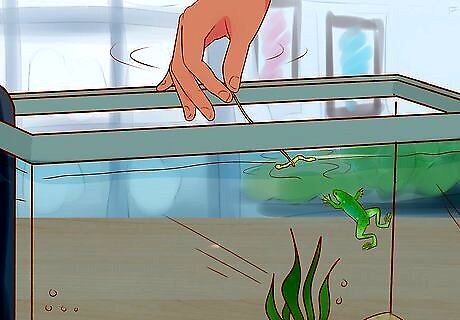
Move the string gently around in the water to get your frog to chase it. When your frog starts to go for the food, move the string to another corner of the cage to get it to chase the string. Keep doing this until the frog gets tired, and then lift the string out of the water to remove the food. It's important to remove the food from the string so that the frog doesn't eat the string along with their tasty treat. If your frog does end up catching the string, don't panic — pull the string out gently from the frog's mouth. If you have to, pull the frog out of the water for just a few seconds with your cleaned and rinsed hands and the frog should instinctively let go of the string.
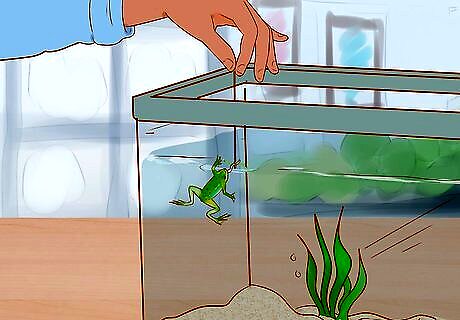
Let them eat the food, then try it again without any treats tied to the string. After removing the food from the string, drop it back into the water so your frog can have a tasty treat! Then, if you want to play with them again, dangle the string in the water without anything tied to it and see if they react.














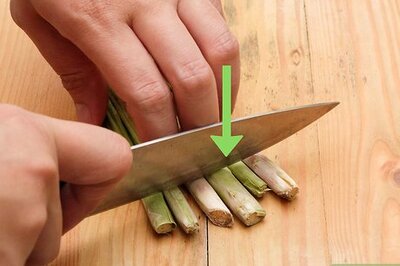





Comments
0 comment